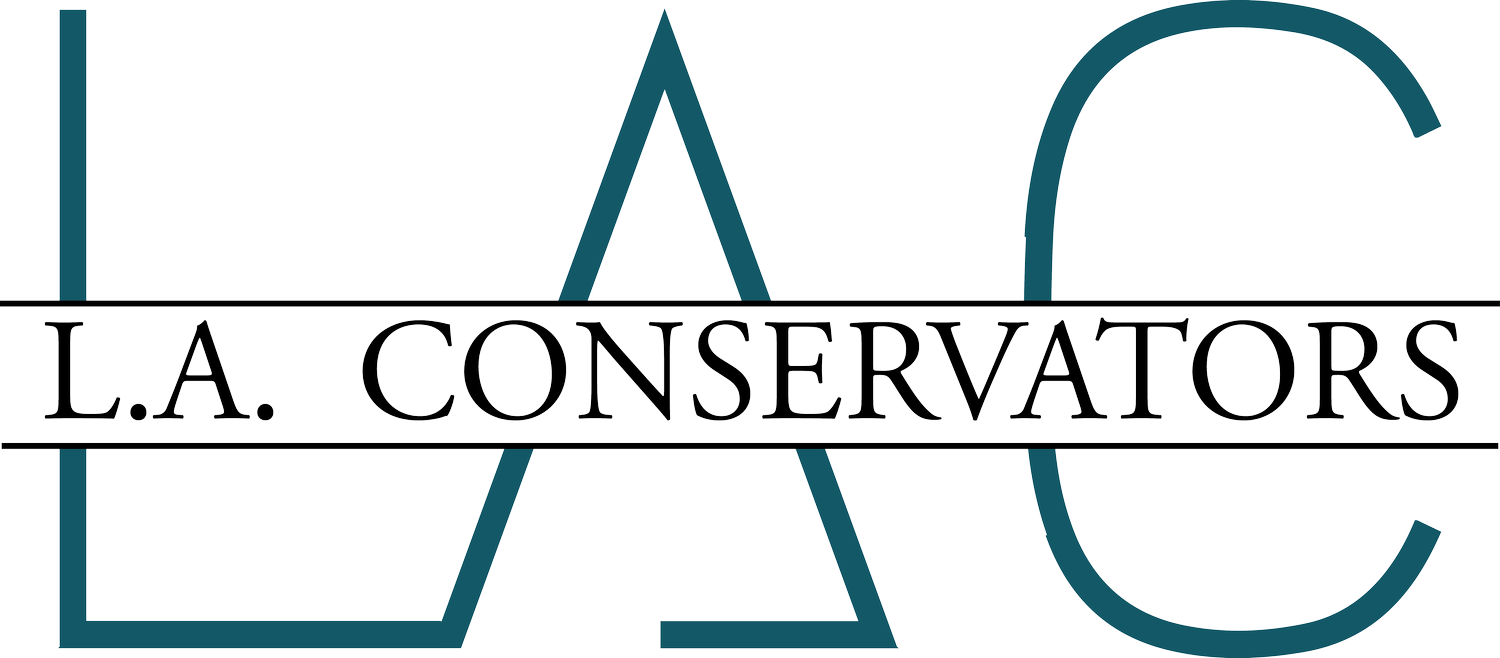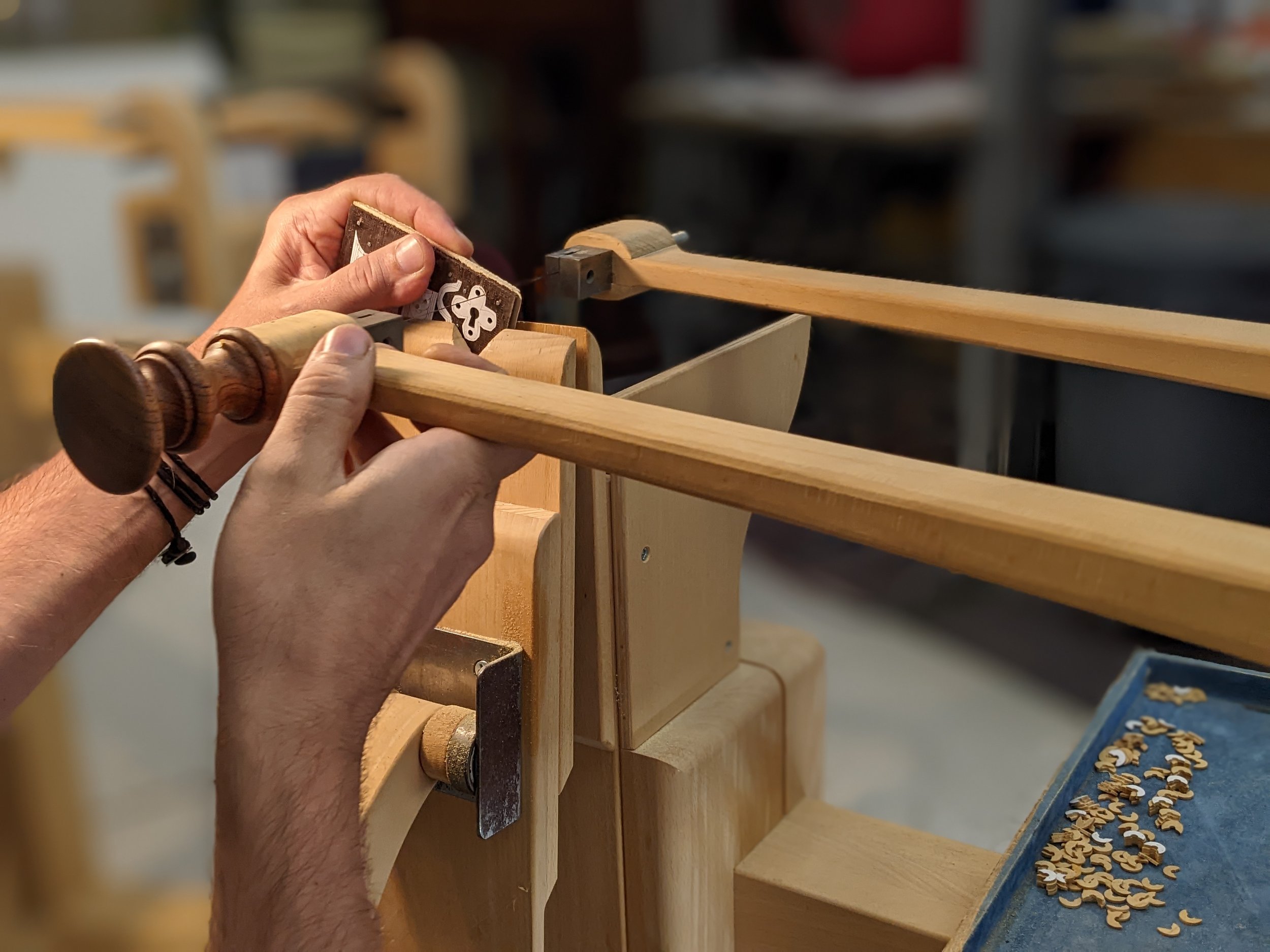
Marquetry Conservation
Conservation of veneered, marquetry-covered, and inlaid artifacts requires special training, knowledge, and techniques.
It is even truer for Boulle marquetry treatments which are usually composed of metal such as brass and pewter, tortoiseshell or horn, and wood veneers. The multiplicity of drastically different materials in Boulle surfaces increases the difficulties of any conservation treatment. We have developed skills and techniques to work on those challenging projects, such as the rehydration of shells and glues under vacuum.
All conservation treatments comply with the American Institute of Conservation Code of Ethics and Guidelines.
We have collected and have access to a wide range of old stock veneer, both sliced and sawn.
We follow the CITES publications and federal laws to regulate our use of rare and/or restricted materials.
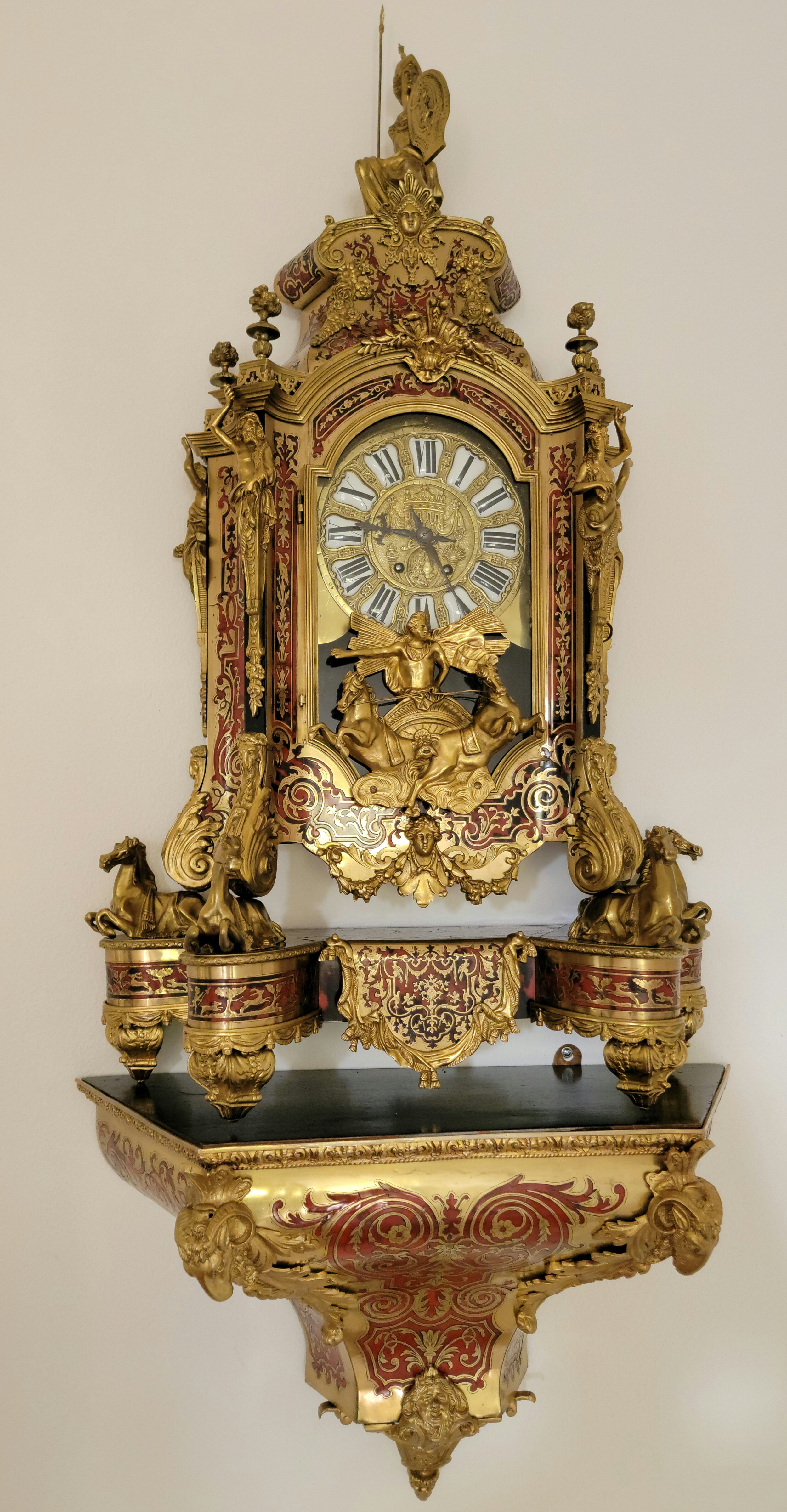
Conservation/Restoration of a Napoleon III Boulle marquetry clock
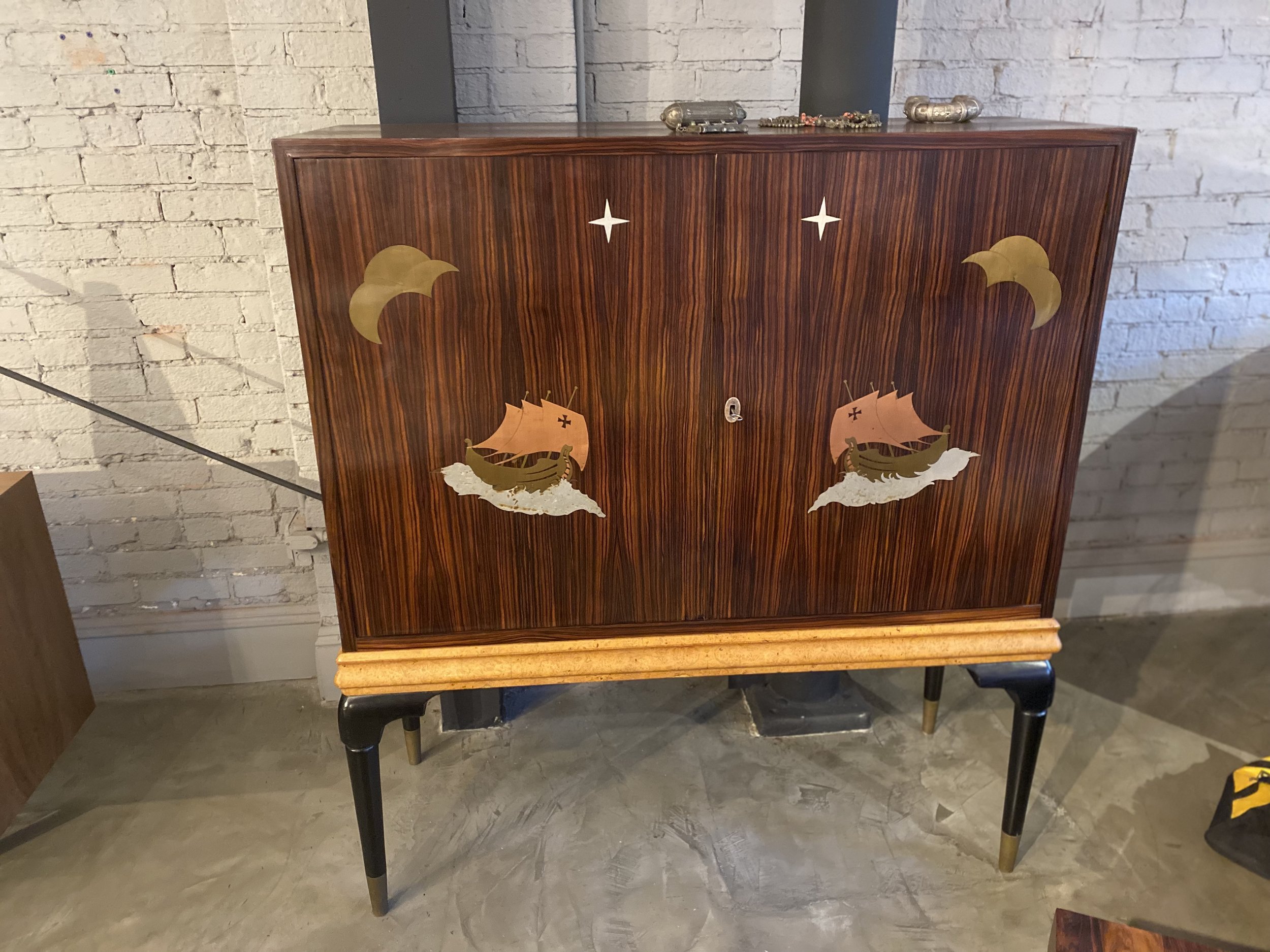
Onsite treatment of minimal veneer loss

Loss in an Italian wood and metal marquetry surface
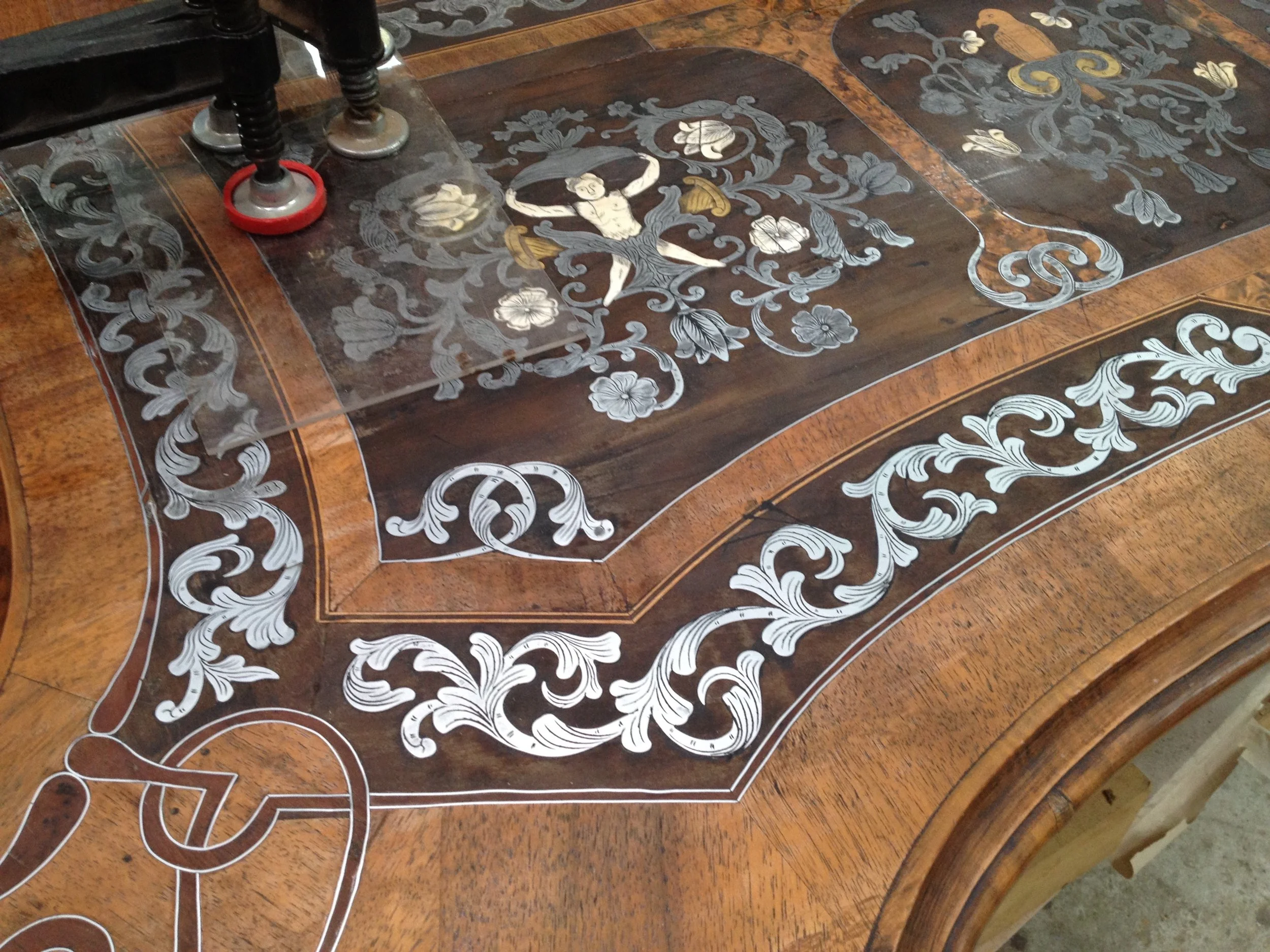
Adding a wood graft and cleaning the pewter surface
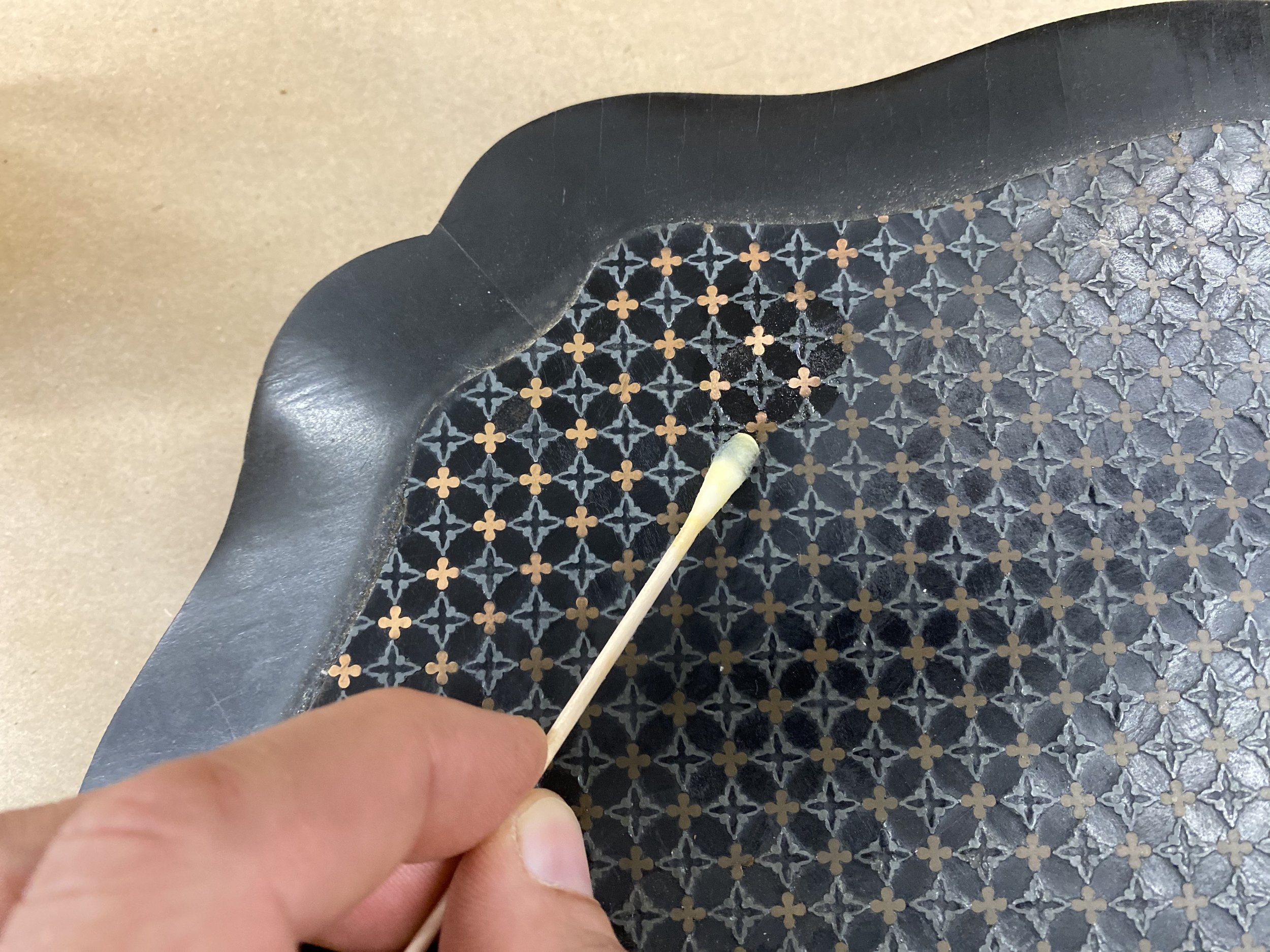
Cleaning of a Napoleon III "A la Reine" motif with a tailored aqueous solution created with the Modular Cleaning Program

19th-century chest of drawer. Documenting for a condition report.
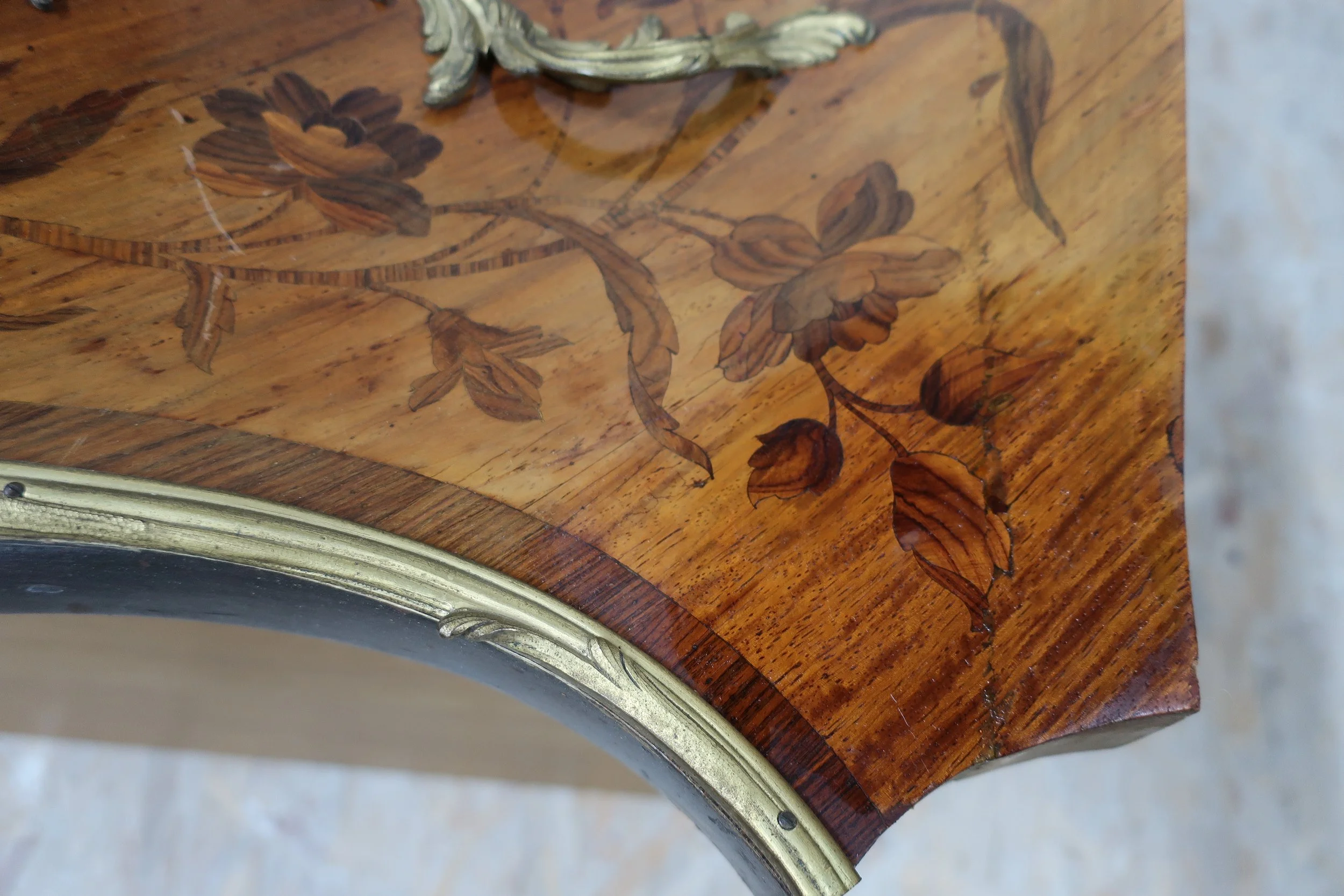
Testing area for 1 - An MCP emulsion to remove the finish 2 - An MCP aqueous solution to remove pollutants and revive colors without sanding.
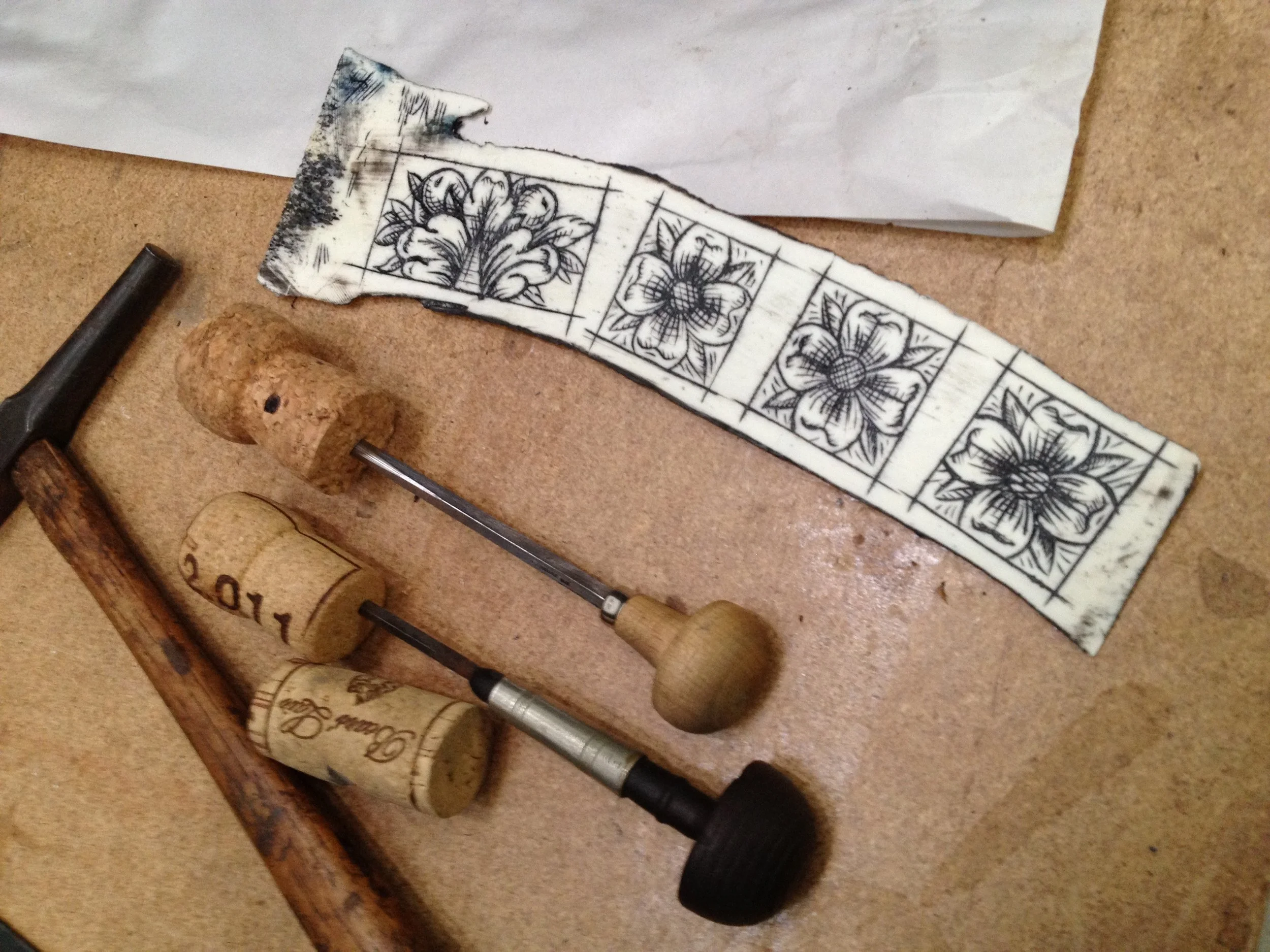
Engraving missing bone elements for a Vargueño
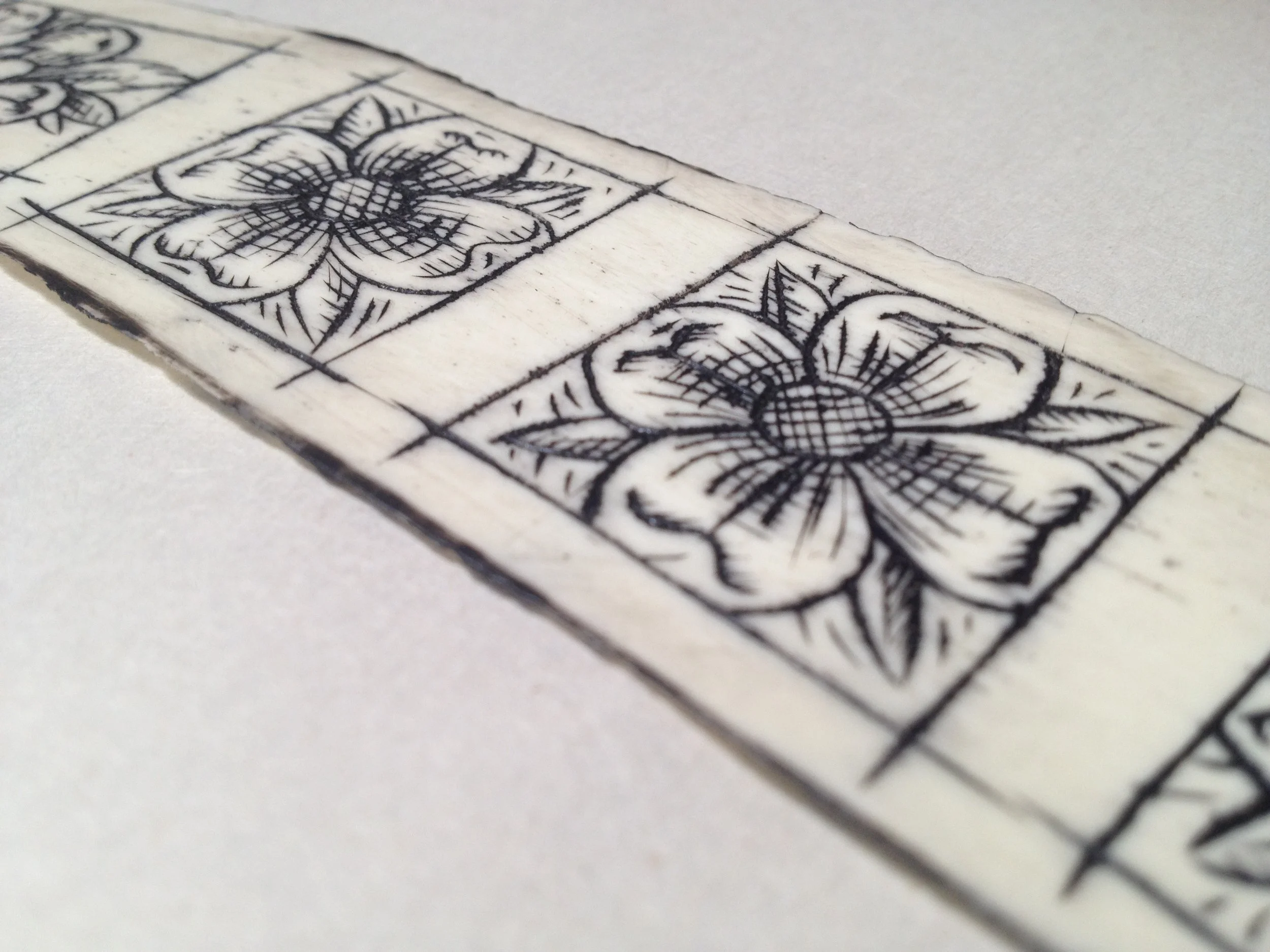
Detail of the bone engraved plates
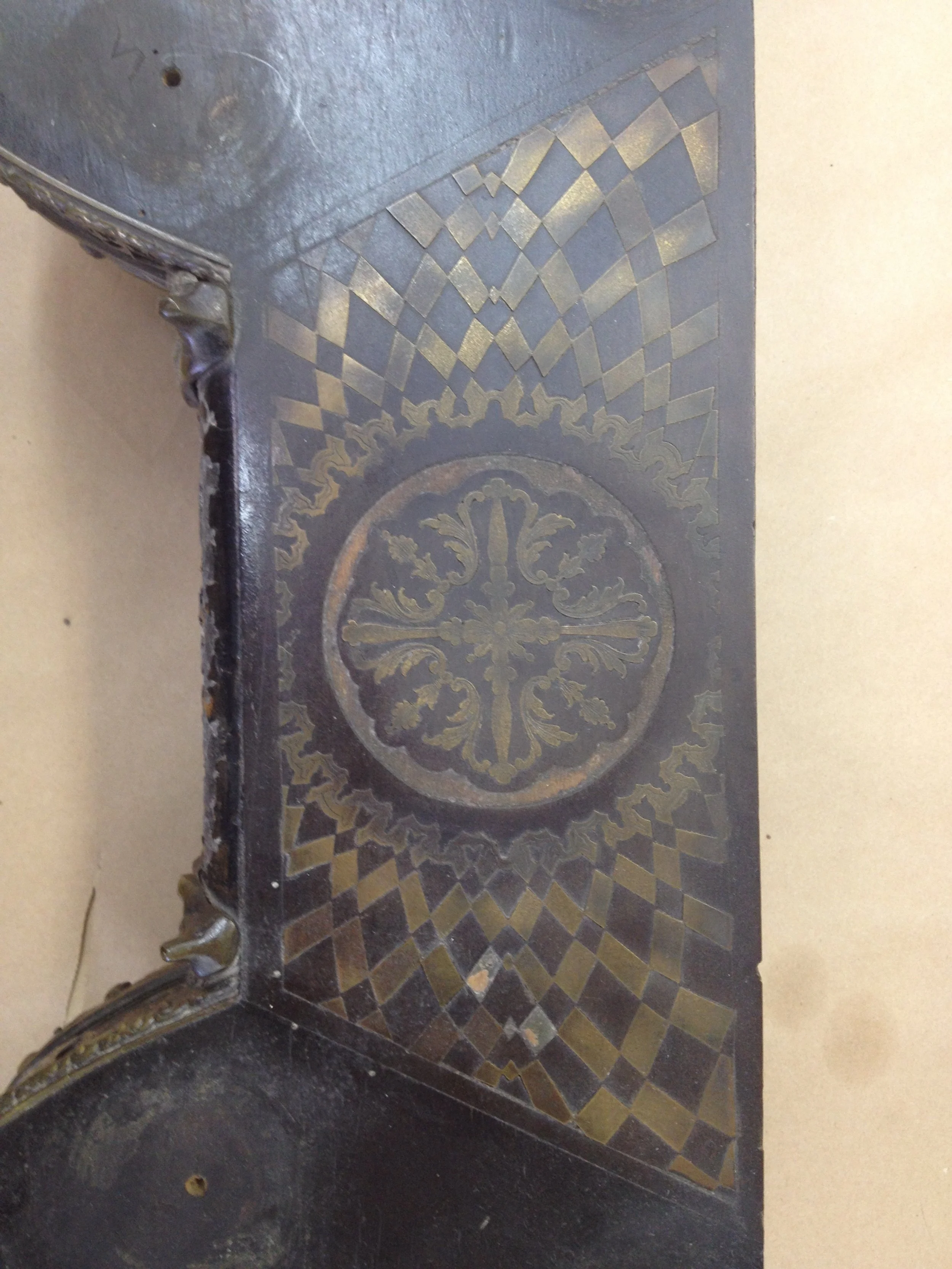
Corroded Boulle marquetry surface
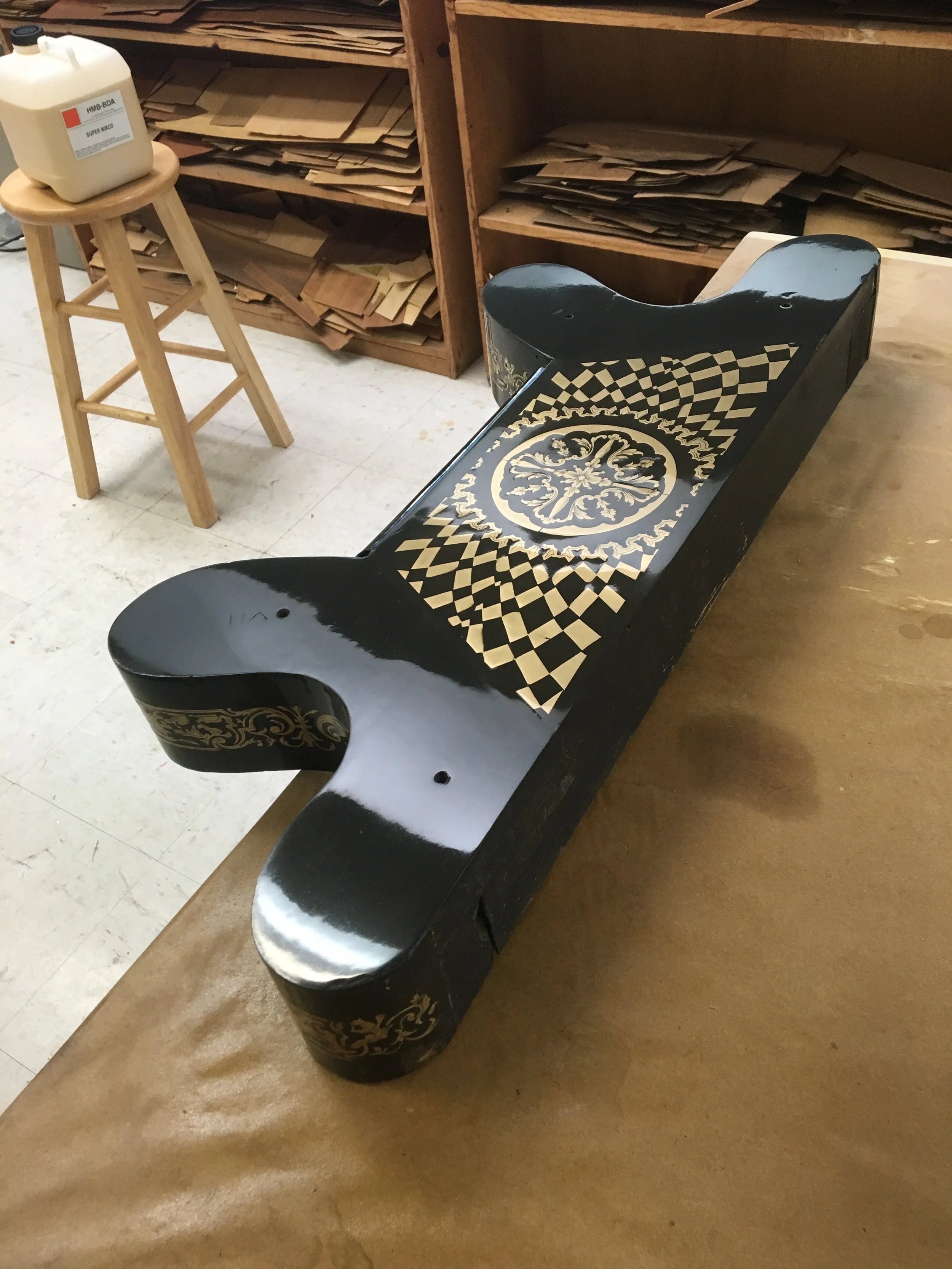
Cleaned and French-Polished Boulle marquetry surface
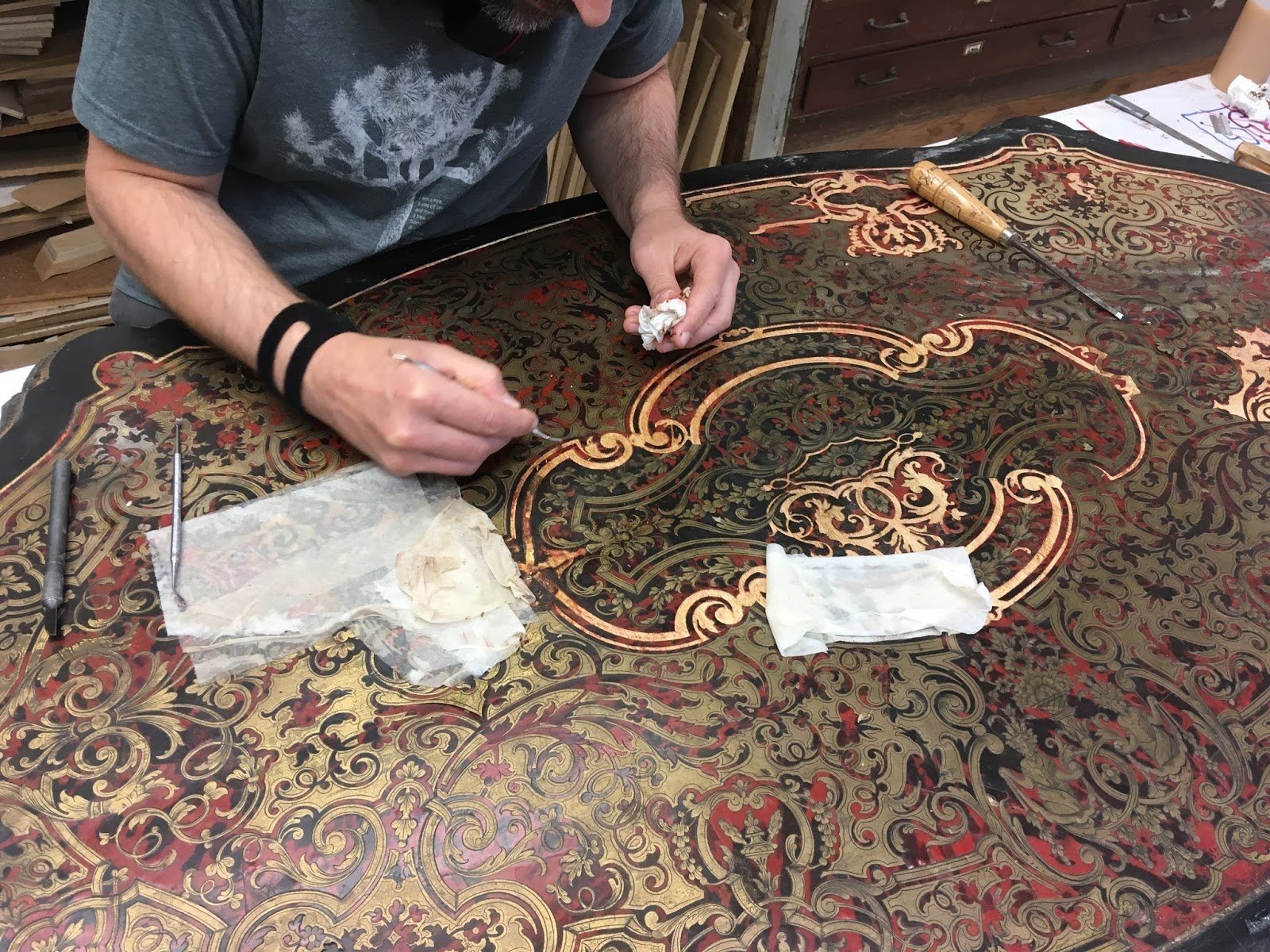
Cleaning of Boulle marquetry cavities to provide proper adherence to inlay the lose brass elements.
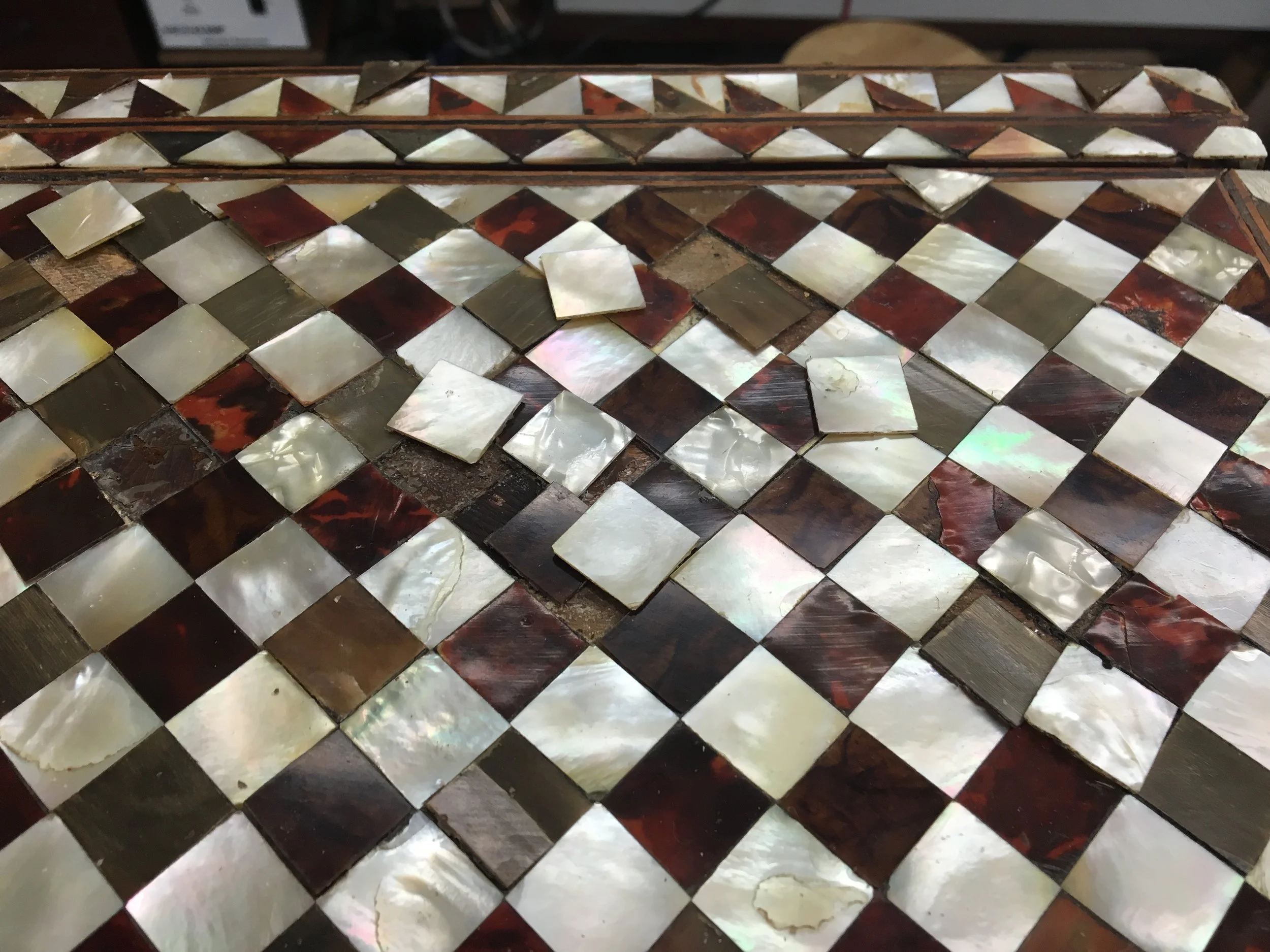
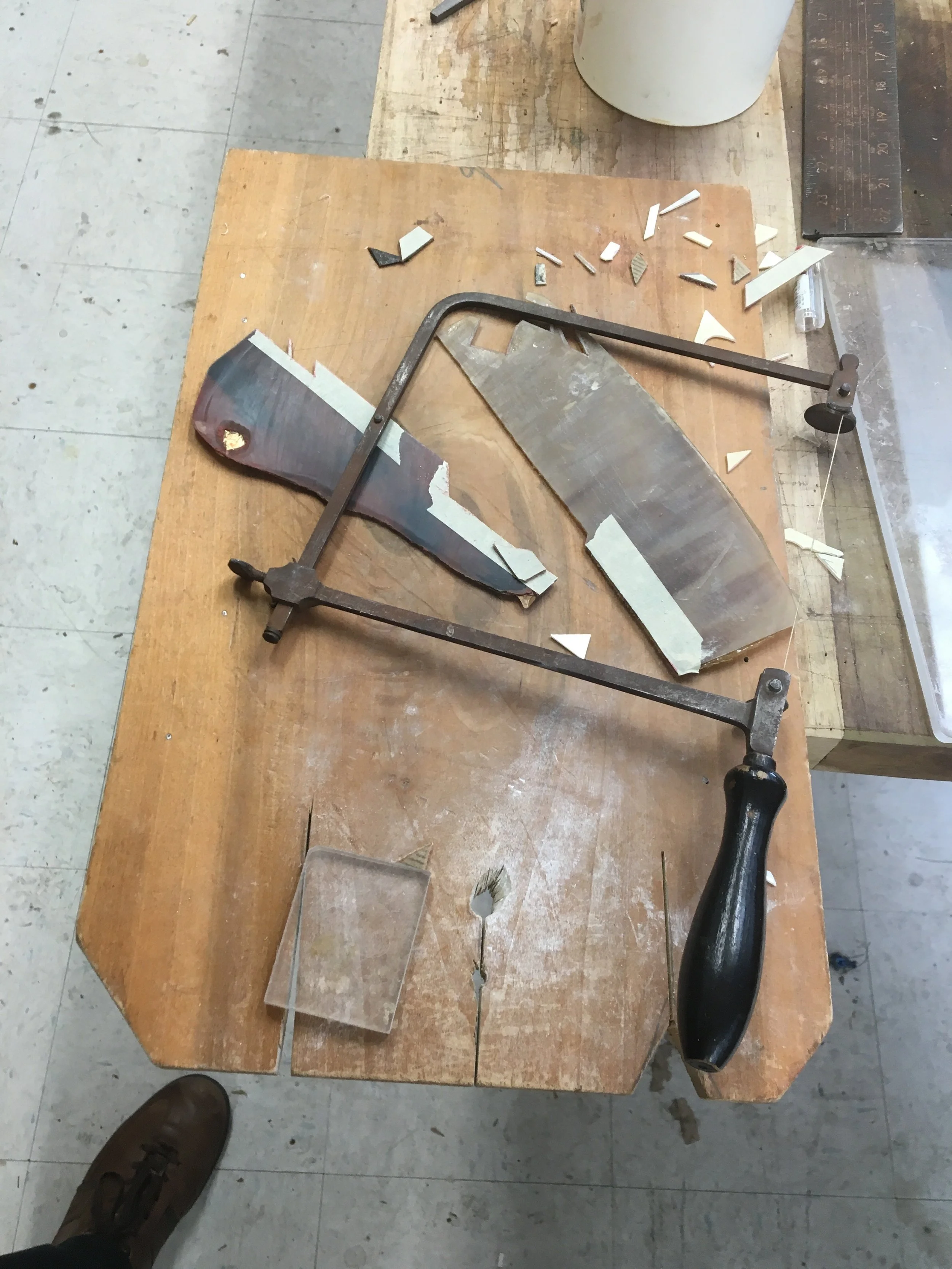
Cutting elements out of horn and mock-shell made from horn
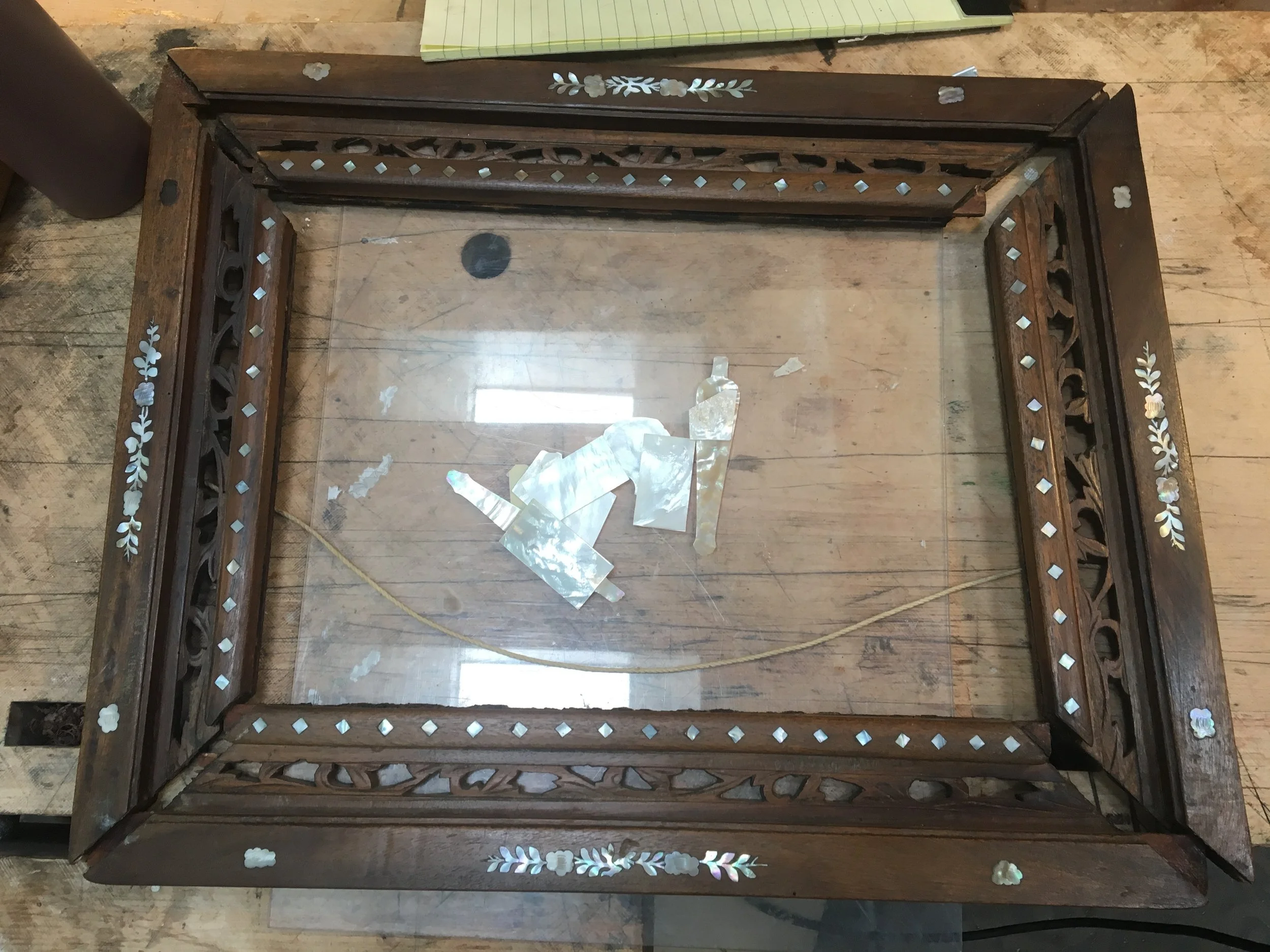
Mother of pearl inlaid frame. Selecting the proper time of Mother of pearl for the project
